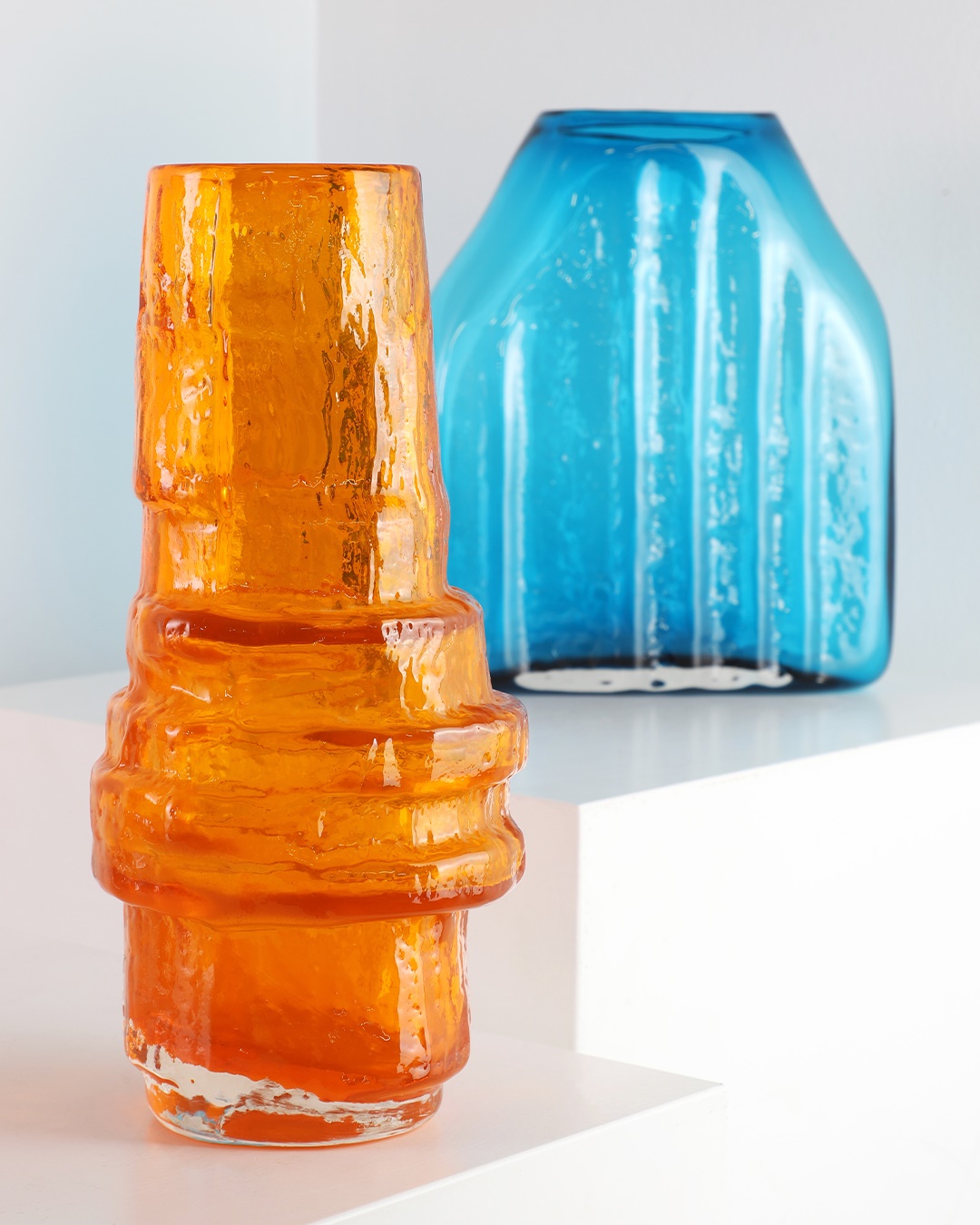

We are pleased to offer a selection of works designed by Geoffrey Baxter for Whitefriars in our upcoming auction, The Glass Sale, on 28 October. With signature colours and innovatively crafted textures, these striking pieces are not to be missed.
10 September 2025
BROWSE THE CATALOGUE REQUEST A VALUATION CONTACT A SPECIALIST
In the post-war period, glass design underwent a renaissance, and at the forefront of this revival in Britain was the historic firm of James Powell & Sons (later Whitefriars Glass Ltd), a company renowned for centuries of innovation in art glass. Among its most iconic designers was Geoffrey Baxter, who joined the firm in the 1950s after graduating from the Royal College of Art. His influence not only reshaped the company's visual identity but positioned it at the cutting edge of modern British design.
By the 1960s, Whitefriars was supplying glassware to prestigious department stores such as John Lewis, Harrods, and Heal’s, marking its transition from a traditional glassworks to a fashionable and forward-thinking brand. A clever marketing move was to assign vivid and imaginative names to their glass colours, such as ‘Willow’, ‘Aubergine’, ‘Cinnamon’ and ‘Tangerine’, enhancing the appeal of their output. This branding foresight placed Whitefriars ahead of its time, mirroring today’s marketing of digital art and design, where naming and narrative lead to collectability and are integral to a piece’s value.

Geoffrey Baxter (1922-1995): Left - a Whitefriars Textured Range 'Hoop' vase (£200-300), Right - a Whitefriars Textured Range 'Shouldered' vase (£600-800)
Baxter’s most enduring contribution came in 1967 with the introduction of the Textured Range. These striking vases and vessels, characterised by their sculptural forms and rough, organic surfaces, were developed using experimental moulds. Initially, to create the iron production moulds, materials like bark, nails, and even metal wire were used to give the naturalistic texture. The result was a collection that felt truly modern, echoing natural forms but cast in vibrant, molten glass. These pieces quickly became design icons and remain highly sought after today. This modern approach to design no doubt contributed to the company changing its name to Whitefriars Glass Ltd in 1962, in addition to the new logo of a monk being introduced.
The range boasts several iconic designs, such as the ‘Banjo’, ‘Drunken Bricklayer’ and ‘Bark’ vases. They were initially offered in subdued colours such as ‘Willow’ and ‘Cinnamon’. Later, as the success and optimism of the range grew, so did the colours, with new hues introduced including ‘Kingfisher Blue’ and ‘Meadow Green’. These reflect the undoubted Scandinavian influence of designers such as Timo Sarpaneva and Tapio Wirkkala, who were producing similar work in Finland.
The market for the Textured Range has continued to grow, with strong prices across the board. A rare ‘Ruby’ coloured ‘Banjo’ vase has sold this year for a world-record price of over £20,000. While this represents the very top of the market, it displays the buoyant nature of this area, and we are pleased to offer a selection in The Glass Sale on 28 October.

alexfroggatt@sworder.co.uk | 01279 817778
We are delighted to be offering a collection of Roberto Rigon's stylised animal works in our first Design auction of 2026, which takes place on Tuesday 27 January.
24 November 2025
Sworders are delighted to present the David Rapley Collection – a lifelong assemblage of fine silver, gold, and decorative arts.
At a recent valuation day in our Stansted Mountfitchet salerooms, two ceramics were brought in that made our specialists sit up and take interest.
24 November 2025